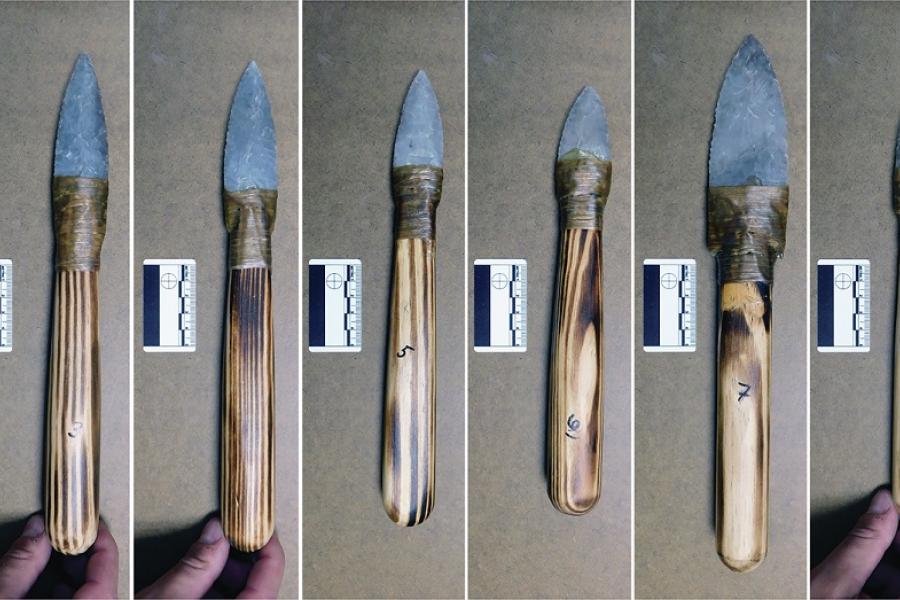Department of Anthropology

Researchers Suggest New Hypothesis for Hominin Invention of Stone Cutting Tools
The use of stone hammers to produce sharp stone flakes — knapping — is traditionally thought to be a process that ancient humans started doing intentionally or by accident before looking for things, such as animal carcasses and hard fruits, to cut. It is a defining feature of hominins and is seen as…
IN A FLASH: Testing Prehistoric Technology
In Assistant Professor Michelle Bebber's class, students learn how prehistoric people hunted for food and learn to use the ancient weapons they used.

What Makes Us Human?
Fifty years ago, Kent State University Distinguished Professor Owen Lovejoy, Ph.D., was among the very first researchers to study the remains of the famous “Lucy” (Australopithecus afarensis), a 3-million-year-old fossil that had recently been discovered by paleoanthropologist Donald Johanson in Hadar, Ethiopia.

England, Egypt and Now … Ohio
Kent State alumnus and Professor Emeritus help Hopewell earthworks in Ohio earn UNESCO World Cultural Site designation.

Experimental collaboration between archaeologists and MeatEater highlights the prevalence of equifinality in archaeological interpretation
Kent State University’s experimental archaeologists, along with those from several other universities, joined forces with the popular hunting, outdoors, and conservation media platform, MeatEater, Inc., for a unique animal processing experiment, shedding new light on ancient stone knives and showcas…
IN A FLASH - FLASHBACK: Views from Anuta, Solomon Islands
Professor Emeritus Richard Feinberg shared images from his research expeditions to the Polynesian island of Anuta.

We Are Here for the Students: Anthropology Professor Discusses Importance of Mentorship
Metin Eren, Ph.D., associate professor of archaeology at Kent State University, was recently interviewed on a CITI “On Campus” podcast hosted by Ed Butch and shared his insights on the importance of mentoring students. “It’s something that all faculty need to take very seriously,” Eren said…
Atlatl Weapon Use by Prehistoric Females Equalized the Division of Labor While Hunting: Kent State Archaeology Professors Led the Experimental Study
A new study led by Archaeologist Michelle Bebber, assistant professor in Kent State’s Department of Anthropology, has demonstrated that the atlatl (i.e. spear thrower) functions as an “equalizer,” a finding which supports women’s potential active role as prehistoric hunters.

Despite the Dangers, Early Humans Risked Life-Threatening Flintknapping Injuries
For most, the craft known as flintknapping is a skilled hobby or art form that was thought to occasionally require bandages or stitches. However, new research suggests flintknapping is far more dangerous than previously understood.

Groundbreaking Study of Fraternity Hazing Co-Authored by Kent State Researcher Reveals Little Connection to Group Solidarity
Kent State University’s newest anthropologist, Assistant Professor Aldo Cimino, Ph.D., has made it his life’s work to understand the causes and consequences of hazing, including the possible generation of solidarity. He and his co-author recently published an on this question in the journal Evolution and Human Behavior.